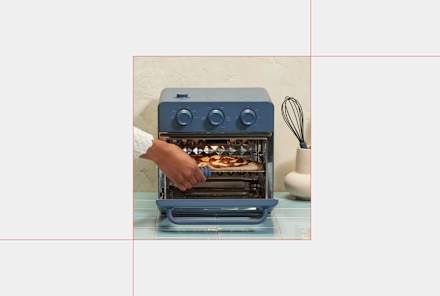Advertisement
Why 2023 Will Be The Year Of Strength Training For Longevity



Want to predict how long you'll live? Look to your muscles. Your strength may be a key to a longer and more healthful life.
Science is showing us that muscle mass may be even more essential to life span and healthspan than we once thought. According to a systematic review1 published in the British Journal of Sports Medicine earlier this year, muscle-strengthening activities can reduce one's mortality risk by 10 to 17 percent.
We're predicting that a growing body of research—in addition to advancements in muscle measurement and a shifting culture around exercise—will go on to change the way we strengthen and monitor our muscle health in the year ahead.
Strengthening the "organ of longevity."
"Having a regular resistance training routine really helps reduce your risk of a range of chronic diseases," Holly Baxter, an accredited practicing dietitian (APD) and competitive bodybuilder, tells mindbodygreen.
Having low muscle mass has previously been associated with an increased risk of cognitive decline2, insulin resistance3, and high inflammatory markers4. It also makes you more susceptible to bone fractures5—a major cause of mortality in older age.
"We all know somebody who has a grandparent that fell and broke their hip and never really regained their life," says metabolic health expert Alexis Cowan, Ph.D.
If you're over 65, there's a one in four chance that you'll fall6, and if you do, studies show your chances of falling again double. If you fall and break your hip,7 there is a 30 to 40% chance8 that you will die within a year. "That's one of the major things that muscle mass can help with," Cowan notes. Improving strength and muscle mass will promote functional mobility and hasten recovery from injury and sickness.
Due to the protective role that muscle plays against age-related injuries and diseases, functional medicine doctor Gabrielle Lyon, D.O., refers to it as "the organ of longevity." And it's important to start building your strength early. Once we reach the age of 30 or so, we start to lose about 3 to 8%9 of our muscle mass each decade. This is a normal part of aging. What isn't normal—and perhaps deserves more attention—is sarcopenia.
With roots in the Greek words sarx (flesh) and penia (poverty), sarcopenia is a disease that causes people to lose muscle at a faster rate. It's associated with a higher risk of disability, disease, and mortality explains leading sarcopenia researcher William Evans, Ph.D.
About 20% of people over the age of 6510 have sarcopenia, and there are likely well over 11 million cases of it in the U.S. While Evans predicts that the disease does have some genetic component, it is largely preventable through a healthy (and protein-rich) diet and muscle-building exercises.
"Sarcopenia itself is not an inevitable consequence of aging," says Evans. "While it is highly prevalent, it's not inevitable."
A new way to measure muscle.
Sarcopenia is not nearly as talked about as other age-related diseases like Alzheimer's. This is in part because it's relatively new, and it was only classified as a diagnosable disease in 2016. The fact that we don't have a great way to measure muscle mass in the first place doesn't help.
Over the last few decades, Evans explains, we've had to rely on measurement tools that aren't entirely accurate. Grip strength can give us a sense of muscle mass, but it can be affected by factors like cognitive impairment11 too. Tests like Dual-energy X-ray absorptiometry (DEXA) scans measure lean body mass as a proxy for muscle mass. This is not foolproof either since lean body mass and muscle mass are not the same things. ("Muscle is related to mortality, and lean body mass is not," says Evans.)
In a push for accessible and reliable data, Evans created a new way to measure muscle mass that packages a special type of creatine12—an amino acid stored in muscle—into a small capsule that you swallow. The creatine then gets distributed into your muscles where it is converted to creatinine, which is lost in urine. Take a urine sample a few days after taking the pill and you'll have a more accurate picture of your muscle mass. This new and noninvasive test is proving very accurate and is now being rolled out in large, NIH-funded cohort studies like the Framingham Heart Study and Women's Health Initiative to further explore the link between muscle and mortality13.
Looking to the future, Evans could see the test administered in every doctor's office, giving people the ability to monitor their muscle mass just like they do their body weight.
Lyon echoes the idea that one day, we'll be able to get a quick read on skeletal muscle mass with every visit to the GP: "That's what I think is going to be the next frontier," she says.
What it means for you: A necessary rise in resistance training.
As we learn more about the role of muscle in aging—and our ability to measure and manipulate it—it's only natural that an emphasis on muscle-building exercise will follow.
For evidence that this shift is already underway, we can look to at-home resistance training platforms like Tempo, a home gym subscription platform that comes with 50 lbs. of weights. "We began seeing growing interest around strength training several years ago, particularly among women, and have only seen that interest expand as the conversation around its benefits increases," Tempo CEO and co-founder Moawia Eldeeb tells mindbodygreen.
Eldeeb notes that the rightful fall of the myth that strength training is only for "bulking" or bodybuilding opened up the space for more women to begin their own strength training journey. "It's interesting to note that of all strength workouts taken, 55% of them were completed by women," Eldeeb shares.
Other at-home training launches that speak to the muscle-building sect include Tonal Fitness, a new home gym startup that uses adaptive weight resistance and has raised $450 million in funding, and Peloton's new Guide feature, designed to check your form during resistance workouts.
Gymgoers are also feeling the burn; the latest Mindbody data shows that weight training classes were one of the three most popular workout types on the platform in 2022.
Ask any trainer, and they'll tell you that this embrace of strength training can only be a good thing for our short-term and long-term health. "If you're looking for the best type of activity to help improve your metabolism, improve your longevity, and improve your bone mineral density, I would say resistance training is it," Baxter notes.
Takeaway of the trend.
Go ahead and (safely) grab those heavier weights, but don't neglect other movements altogether. As Lyon tells us, "It's not that it's the bigger muscle that's better. It's the quality of the muscle that's better." She thinks of the ideal muscle as a suitcase for nutrient storage. And the best suitcase is yes, large, but it's also strong, durable, and ready to roll at any time. To build this higher quality muscle overall, endurance and zone 2 training, HIIT exercises, and recovery practices can all be helpful add-ons to a solid resistance routine. We'll meet you at the weight rack.
13 Sources
- https://pubmed.ncbi.nlm.nih.gov/35228201/
- https://jamanetwork.com/journals/jamanetworkopen/fullarticle/2793806
- https://www.nature.com/articles/s41366-020-0590-y
- https://www.sciencedirect.com/science/article/pii/S1568163720303202?via%3Dihub
- https://www.sciencedirect.com/science/article/abs/pii/S8756328216303209?via%3Dihub
- https://www.cdc.gov/falls/facts.html
- https://www.cdc.gov/mmwr/volumes/67/wr/mm6718a1.htm?s_cid=mm6718a1_w
- https://bmcmusculoskeletdisord.biomedcentral.com/articles/10.1186/1471-2474-12-105
- https://www.ncbi.nlm.nih.gov/pmc/articles/PMC2804956/#R4
- https://www.ncbi.nlm.nih.gov/pmc/articles/PMC3060646/
- https://pubmed.ncbi.nlm.nih.gov/30672025/
- https://academic.oup.com/biomedgerontology/article/76/1/123/5842113
- https://bjsm.bmj.com/content/56/21/1218
Watch Next
Enjoy some of our favorite clips from classes
Enjoy some of our favorite clips from classes
What Is Meditation?
Mindfulness/Spirituality | Light Watkins
Box Breathing
Mindfulness/Spirituality | Gwen Dittmar
What Breathwork Can Address
Mindfulness/Spirituality | Gwen Dittmar
The 8 Limbs of Yoga - What is Asana?
Yoga | Caley Alyssa
Two Standing Postures to Open Up Tight Hips
Yoga | Caley Alyssa
How Plants Can Optimize Athletic Performance
Nutrition | Rich Roll
What to Eat Before a Workout
Nutrition | Rich Roll
How Ayurveda Helps Us Navigate Modern Life
Nutrition | Sahara Rose
Messages About Love & Relationships
Love & Relationships | Esther Perel
Love Languages
Love & Relationships | Esther Perel


















